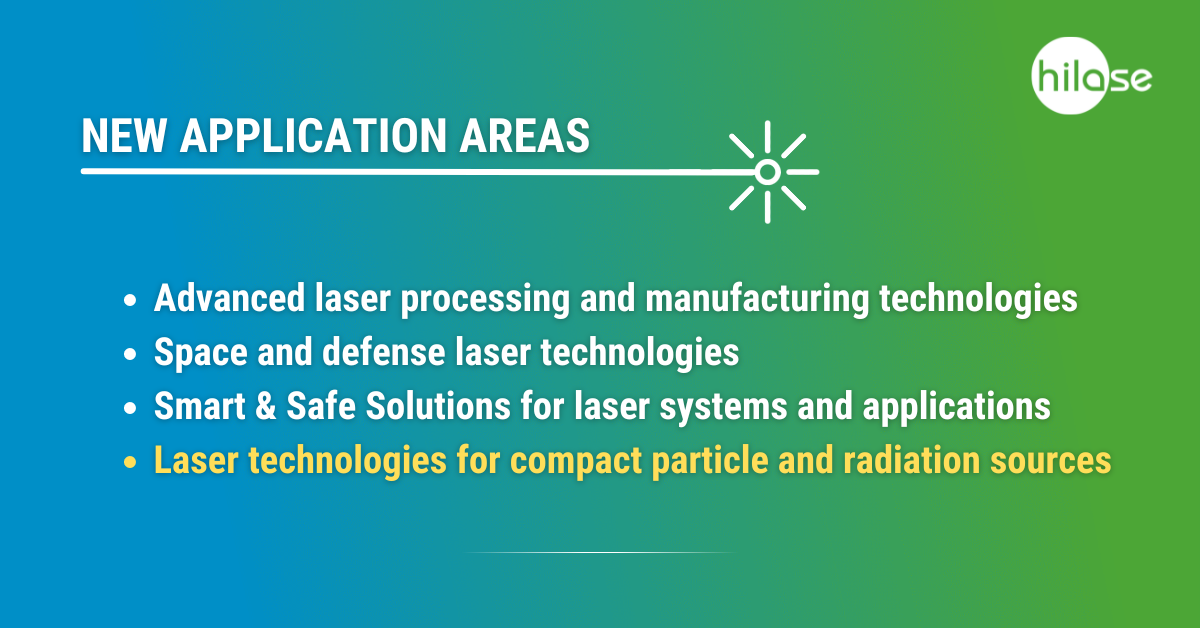Laser technologies for compact Particle and Radiation sources (LPR for short) could, in the future, provide emission-free energy, compact X-ray sources for material recognition, and particle sources for proton therapy to treat cancer. Within this new strategic area, the HiLASE Center is focusing on high-power laser sources, adaptive optics, design and optimization of laser systems, predictive thermo-optic modelling, laser beam engineering, laser pulse shaping, non-linear optics, laser drivers for EUV and mid-IR sources, and pump systems for PW-class lasers.
The guarantor of this strategic area is Martin Divoký, team leader of High Energy Slab Lasers. We asked him a few questions in the following interview.
Could you introduce the LPR area as such?
My name is Martin Divoký and I have been working with lasers since 2004, when I started working on amplifying very short pulses with high intensity and then moved to pulsed lasers with high average power. The two areas are coming together in the field of LPR.
Intense laser pulses generate huge electric fields that rip particles out of matter and then accelerate them, but over a much smaller area and at a lower cost. For real-world applications, the accelerator needs to operate at high repetition rates, otherwise, it will only deliver, for example, one image per hour.
How will the HiLASE Centre participate in the development of LPR sources?
We will not create entire resources in the HiLASE Center. Intense pulses and the physics of the interaction itself are not our expertise. However, we do have vast experience in developing sources for intense pulses – femtosecond lasers. High-energy, average-power lasers with nanosecond pulses, such as BIVOJ, are used as these sources. We also have a great deal of experience with conversion to harmonic frequencies, specifically to green, which is used to excite CPA or OPCPA femtosecond chains.
These pump lasers with high average power generate a large amount of heat, which degrades the laser properties. Therefore, in addition to thermal management, we have to deal with compensation for thermal aberrations, be it polarization changes or wavefront changes. We have extensive experience with all this.
Last but not least, the efficiency of these lasers needs to be increased to approach that of conventional accelerators, which reach efficiencies in the tens of percent. The whole laser system is not yet close to this, below one percent, and this is therefore one of the main areas for improvement.
What is the main driver for the development and use of these technologies?
These are mainly medical and security applications. Compact X-ray sources for material diagnostics and particle sources for proton therapy of cancer. Currently, particle accelerators are used, which are bulky and expensive. Lasers can perform this function in a tenth of the area, at a tenth of the cost.
In addition, lasers can also be used for fuel compression in inertial inertial laser fusion – but many more years of research are needed for this.
How do you view the current and potential benefits of these technologies for society?
More affordable proton therapy will make it possible to treat more patients, while a new cheap and stable, emission-free energy source will enable the development of civilization in a world affected by climate change.
What are the opportunities for collaboration with experts from other disciplines and institutions in this area?
As I mentioned before, we are focusing on the development of pump lasers – we still need scientists who are involved in the development of high-intensity femtosecond lasers and the process of interaction of radiation with matter. We are just starting a collaboration with ELI Beamlines on just such an application.
The interview with Martin Divoký, LPR guarantor, was conducted by Marie Thunová, Head of Marketing & PR.









